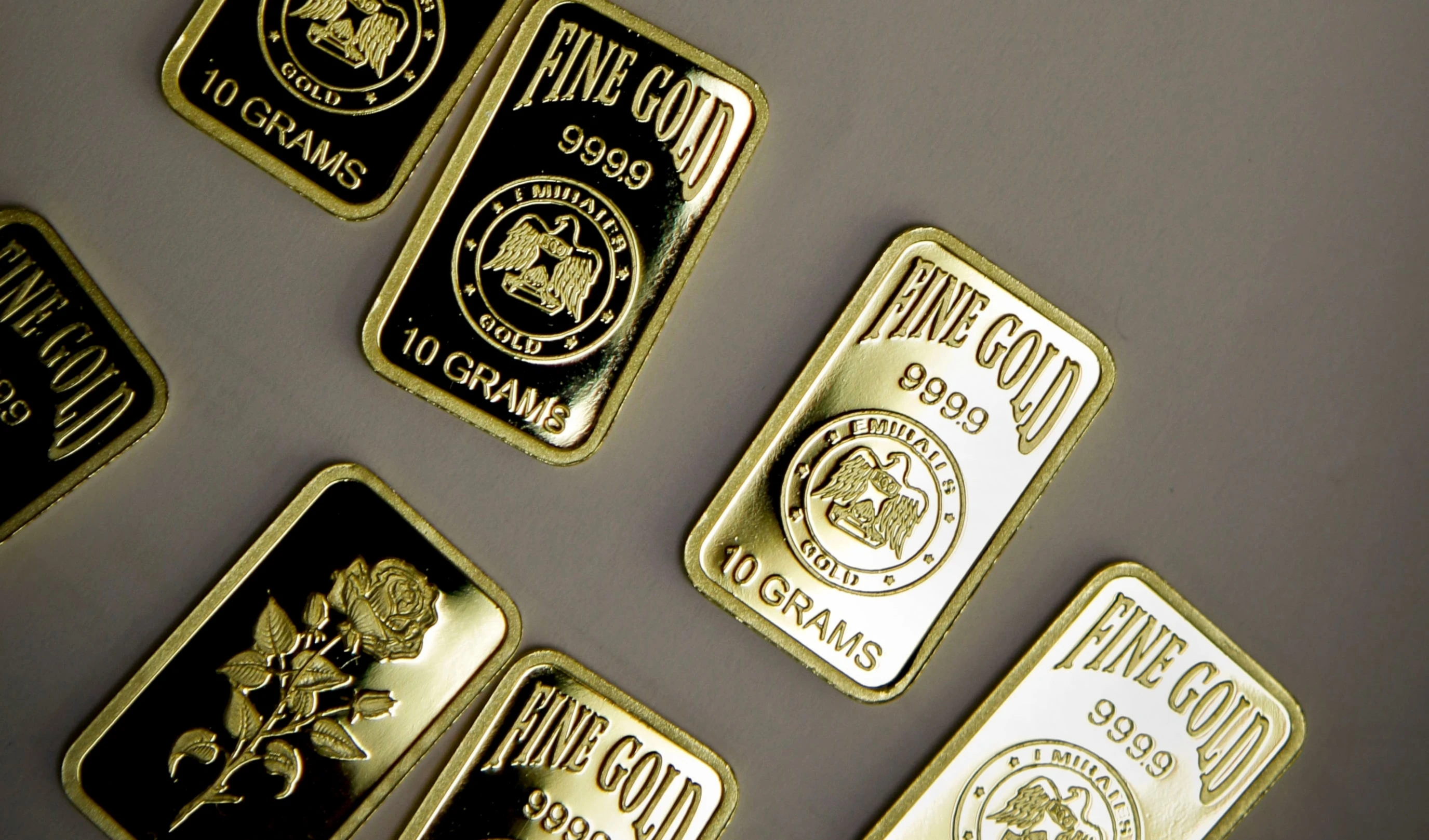Gold price soars past $4,100 Monday amid trade tensions
Gold prices hit a historic high above $4,100 per ounce amid renewed US-China trade tensions.
-

Gold jewelry melts inside a crucible at A&M Precious Metals in the St. Vincent Jewelry Center in the Jewelry District of Los Angeles, Friday, May 2, 2025. (AP)
Gold surged to new record levels on Monday, with spot prices climbing 1.8% to $4,106.48 per ounce and briefly touching $4,116.77, driven by renewed US-China trade frictions and mounting anticipation of Federal Reserve interest rate cuts. US gold futures for December delivery also advanced 3.3% to $4,133, extending one of the strongest bull runs in decades.
After a remarkable rally this year, gold has now gained 56% year-to-date, surpassing the $4,000 milestone for the first time just last week. The metal’s momentum has been powered by economic uncertainty, aggressive central bank purchases, expectations of monetary easing, and geopolitical volatility. Analysts note that the rally is also being reinforced by a weaker US dollar, sticky inflation, and robust inflows into gold-backed ETFs.
"Gold may continue to climb. We could see prices surpass $5,000 per ounce by the end of 2026," Phillip Streible, Chief Market Strategist at Blue Line Futures, told The Nation. He added that the market remains supported by "central bank buying, strong ETF inflows, US-China trade tensions, and lower US interest rate trends."
Trade tensions rekindled
Global markets were unsettled after US President Donald Trump reignited the long-standing trade dispute with China late last week, effectively ending a fragile truce between the two largest economies. The move included new tariff threats on select Chinese goods and renewed restrictions on tech exports, heightening fears of a broader economic slowdown.
This escalation has driven investors toward safe-haven assets such as gold, US Treasuries, and the Swiss franc. Analysts at FXStreet noted that the renewed conflict ignited haven demand on concerns over a potential breakdown in trade relations, adding to an already fragile market backdrop shaped by sluggish global manufacturing and rising protectionism.
Fed policy outlook fuels bullish sentiment
Traders are now pricing in a 97% likelihood of a 0.25% Federal Reserve rate cut in October, followed by a 100% chance of another in December, according to the CME FedWatch Tool. Investors widely expect the Fed to begin a cycle of monetary easing that could extend into 2026.
As borrowing costs decline and real yields fall deeper into negative territory, gold’s appeal as a non-yielding store of value has strengthened. The US dollar index has slipped to its lowest level in nine months, further supporting bullion demand from overseas buyers.
Lower yields and a weaker dollar have made gold an increasingly attractive hedge, analysts at Investopedia observed, adding that central banks, particularly in China, Turkey, and India, have been buying gold at the fastest pace in over five decades.
Leading financial institutions remain bullish. Bank of America and Société Générale both forecast that gold could reach $5,000 per ounce by 2026, while Standard Chartered raised its 2025 average price projection to $4,488.
Suki Cooper, Head of Global Commodities Research at Standard Chartered, told The Nation that "the current rebound is highly probable, with short-term corrections potentially supporting long-term gains."
Other precious metals also rally
Gold’s surge spilled over into the broader precious metals complex. Silver jumped 3.1% to $51.82 per ounce, hitting an intraday record of $52.12, supported by similar safe-haven flows and strong industrial demand in solar and electronics manufacturing. Platinum gained 3.9% to $1,648.25, while palladium climbed 5.2% to $1,478.94.
Still, traders warned of overbought conditions, as technical indicators such as the Relative Strength Index (RSI) reached 80 for gold and 83 for silver, suggesting potential for near-term pullbacks after the steep rally.
Broader implications
Gold’s record-breaking ascent reflects a global shift in investor behavior, as uncertainty surrounding geopolitics, monetary policy, and fiscal sustainability continues to rise. Central banks have been diversifying away from the US dollar, reflecting concerns over long-term debt levels and potential de-dollarization trends in global trade.
At the same time, stubborn inflation and supply constraints in mining output have bolstered the case for higher prices. With real yields near multi-year lows and markets bracing for further policy easing, many analysts see gold’s dominance persisting into 2026.
Read more: Gold hits record $4,059 as US-China trade clash fuels safe-haven rush

 4 Min Read
4 Min Read










